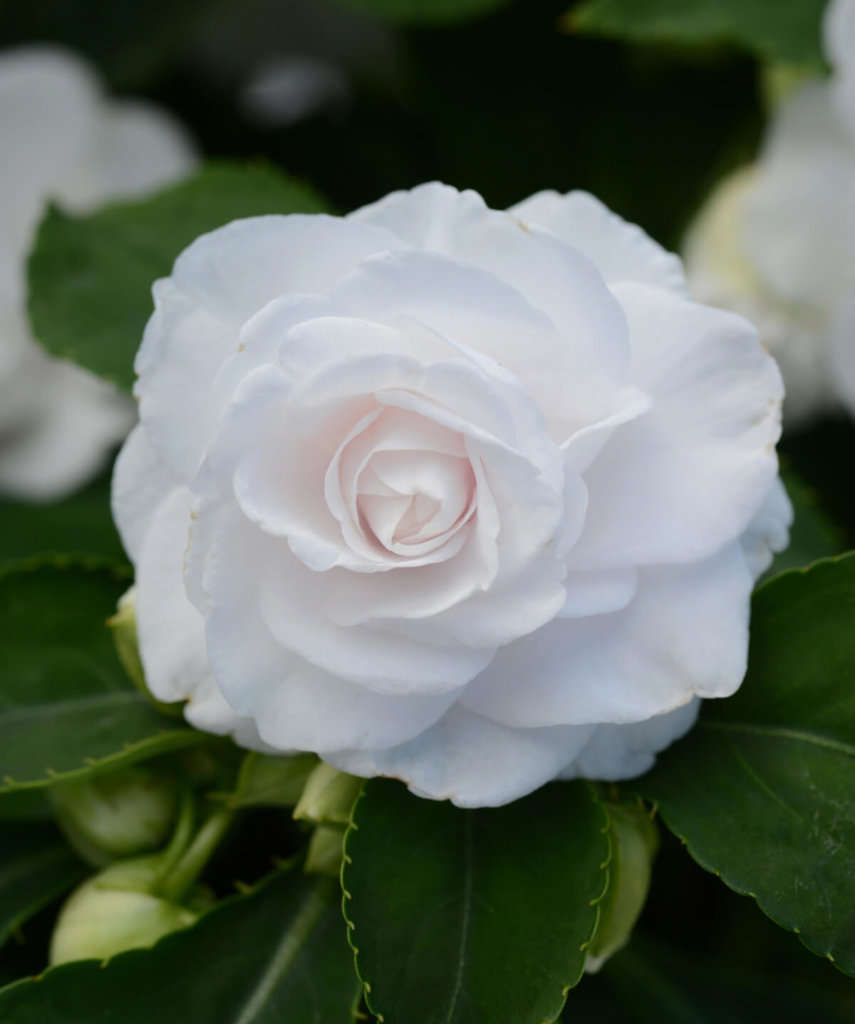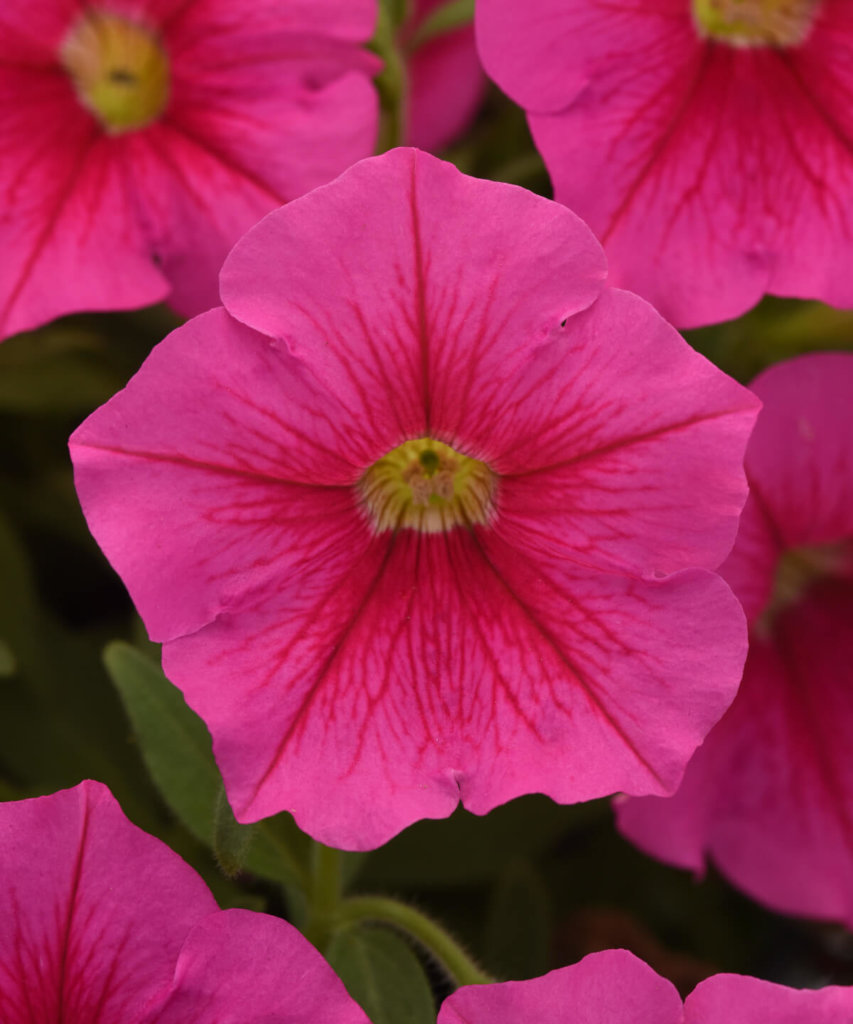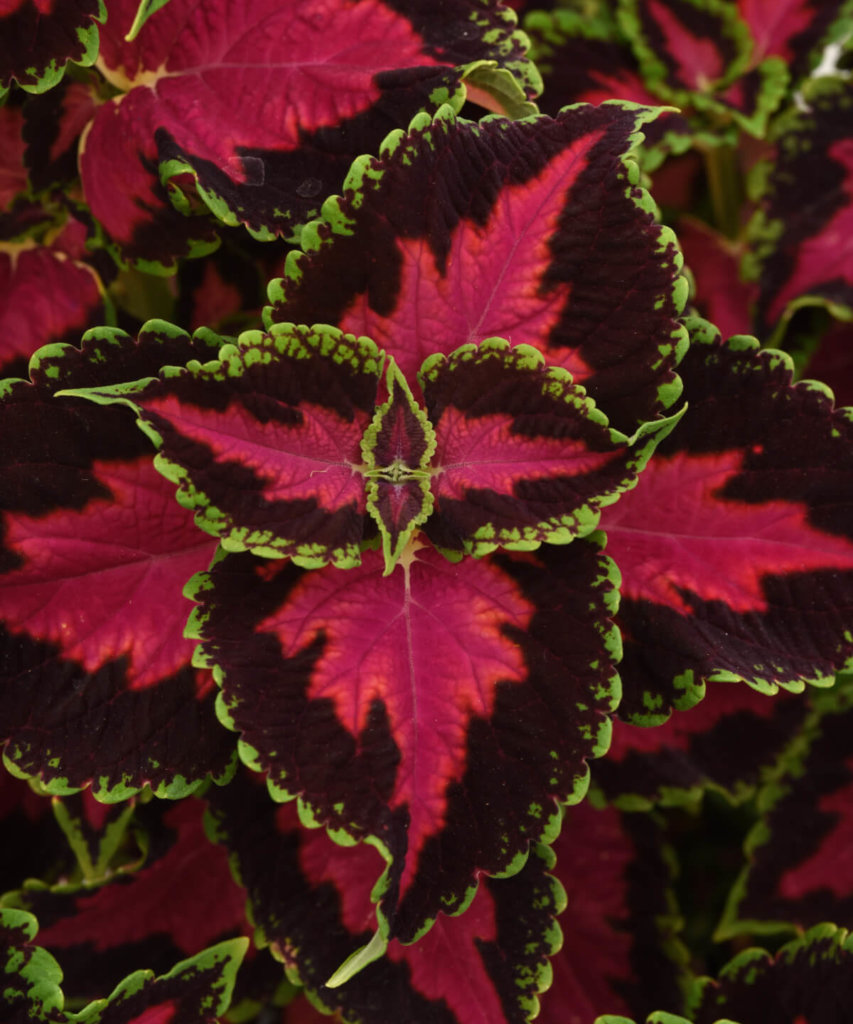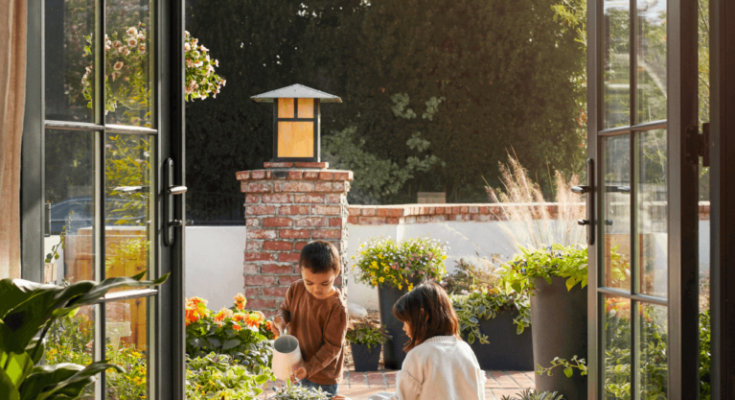With warm weather and sunny days ahead, it’s time to turn our attention to the outdoors. Whether you’re a houseplant lover looking to expand your horizons or you have a lackluster space you’d like to spruce up, planting outdoor flowers is an easy and rewarding project.
Looking for some inspiration? Start with our guide on how to create a welcoming outdoor oasis, with tips to clean up and redesign your space to make it functional and beautiful. Of course, no outdoor space would be complete without plants, so add the finishing touches with our guide to the perfect outdoor flowers for every space.
Planting and caring for outdoor flowers can seem intimidating, but this guide shares all the information you need to get started on your outdoor gardening journey.

Getting Started With Outdoor Flowers
Plants
If you’re new to outdoor gardening, get ready for a whole new world of plants at your disposal! We recommend starting with annual plants, which are readily available in the spring. They tend to flower non-stop and they complete their life cycle within one growing season.
Growing flowering annuals is rewarding thanks to their fast growth rate paired with the colorful flowers and foliage they showcase throughout the season. They are a low cost, low risk way to try your hand at outdoor gardening. There are dozens of plants from which to choose, but we think the classics like petunias, impatiens, and geraniums will continue to remain popular thanks to their low maintenance, high reward nature.
If you’re looking for a place to get started, check out our Outdoor Flower Shop.
Tools
Just getting started? Here are a few essential tools we recommend to care for your blooming beauties all season long:
- A gardening trowel for planting
- A soil scoop for moving large amounts of soil during potting
- Gardening gloves to protect your hands
- A watering can or hose with a watering wand
- Fertilizer to sustain flowering and growth
- Plant snips for trimming and removing old flowers
- Extra potting mix for mid-season touch ups
Planting
Outdoor flowers can be planted in the ground, in raised beds, or in decorative planters and hanging pots. When planting in a decorative planter or hanging pot, here are a few things to keep in mind:
- Choose a planter with a drainage hole that allows excess water to escape, which can prevent root rot.
- Place the planter where water can drain freely. Do not place it on a saucer, and elevate it with pot feet if excess water doesn’t seem to be escaping.
- Fill your planter with fresh potting soil (not garden soil) which is formulated to be lightweight and well-draining.
- Water everything immediately after planting and check on the plants daily for the first few weeks to ensure they don’t get too dry.

Expert Care Tips For Outdoor Flowers
Light
Outdoor flowering plants fall into three categories of sun exposure, and it’s important to match the plants you choose to the place they’ll be planted. The easiest way to do this is to observe how much sun a particular spot receives throughout the day. Simply check the place you have in mind every hour or two as the day goes on to gauge the amount of direct sun exposure.
- 6 or more hours of direct sun is considered “full sun”
- 4-6 hours of direct sun is considered “part sun” or “part shade”
- 4 hours or fewer of direct sun is considered “full shade”
Wondering if your plants are receiving the proper amount of sunlight?
- If plants are receiving less sunlight than they’d prefer, you might notice reduced flowering, slow or sickly growth, spindly or weak stems, and eventual death.
- If plants are receiving more sun than they’d prefer, you might notice reduced flowering, excessive wilting, scorched flowers and foliage, and eventual death.
Water
A general rule of thumb for most flowering annuals in containers is to water when 50% of the soil volume is dry. It’s important to water the soil (not the plants) until water begins to trickle out of the drainage hole.
Watering outdoor plants takes a little more attention thanks to a wide range of conditions, including variations in temperature, light, wind, rain, and more. Keep a full watering can at the ready, and after a few weeks of frequent checking in you’ll quickly learn how often your plants need to be watered.
- Water more frequently (up to daily) when temperatures are high, humidity is low, during windy conditions, or as your plants grow larger.
- Water less frequently during periods of cooler temperatures, overcast days, or if you’ve given your plants a significant trim.
- If your plants receive rainfall, a rule of thumb is that 1” or more of rainfall can replace hand-watering.
Temperature
The beauty of outdoor flowers is that they tolerate a wide range of temperatures and often have long flowering seasons from spring through fall. That being said, there are a few guidelines to keep in mind:
- Freezing temperatures can kill these plants, so cover them or bring them indoors if there is a threat of frost in the spring or fall.
- Cold temperatures can stunt their growth, so avoid prolonged exposure to temperatures below 35-40°F.
- Most flowering annuals will begin to grow quickly once night temperatures are consistently above 60°F. If you’re not quite that warm yet, don’t worry—your plants will take off in no time!
Food
We love flowering plants for their ability to bring color to a space for months on end. In order to flower non-stop, flowering plants require lots of food so be sure to work regular fertilizing into your care routine. To encourage maximum flowering and growth, fertilize your flowering plants once every two weeks with a water-soluble fertilizer high in phosphorus, like one with an N-P-K ratio of 15-30-15 or similar.
Trimming
While it’s not always necessary, trimming your flowering plants can help them produce more blooms and give them an overall nicer appearance. Feel free to shape your plants by cutting back the stems by up to one-third. Both upright and trailing plants can benefit from a little tidying-up.
When old blooms decline, remove them from the plant by gently pulling them off with your fingers or cutting the base of the flower with snips. This will prevent mold growth and can encourage new flowers to develop, since the plant isn’t putting energy into producing seed.
Some plants are grown for their foliage, like coleus or caladium. If you are growing a plant for the beauty of its leaves, we recommend removing any flower buds that develop. Allowing them to remain can take energy away from healthy leaf growth.

Saying Goodbye To Your Flowering Plants
When it comes to planting flowering annuals for non-stop summer color, keep in mind that these plants will naturally die at the end of the season as they complete their annual life cycle. This usually happens once there’s been a hard frost in the fall. We recommend cutting back or digging out the plants, which can be composted, before you set your sights on planning fresh color for the year ahead.



